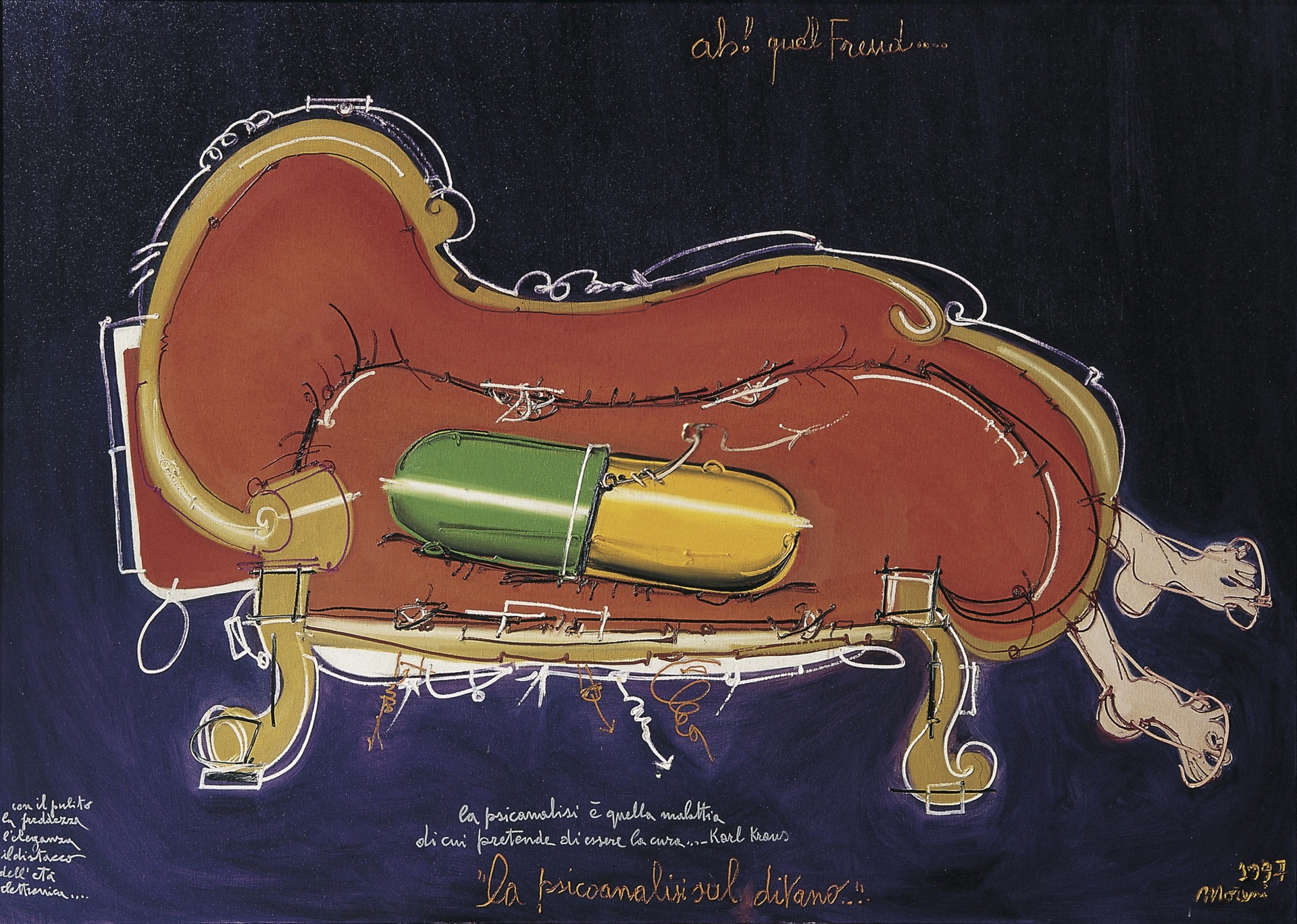Despite the obvious differences in era and style, the five artists presented this week share a deep drive for innovation and critical reflection. Each, in their own way, has sought or seeks to reinvent visual language to question the world around them, SURPASSING THE TRADITIONAL BOUNDARIES OF RAPRESENTATION.

Graham Sutherland, Untitled, 1970, watercolor on canvas, cm. 48 x 76 Courtesy Galleria d' Arte Maggiore g.a.m., Bologna | Paris | Venice
In this new issue of our Art Week we get to know two artists born in the early 1900s, Graham Sutherland and Mattia Moreni, thanks to two exhibitions held at ACP - Palazzo Franchetti by Fondazione Calarota in Venice.
Graham Sutherland in venice
ACP - Palazzo Franchetti by Fondazione Calarota hosts, with the patronage of the British Embassy in Rome, the exhibition dedicated to Graham Sutherland, one of the major innovators of contemporary British painting. The exhibition "Graham Sutherland. Bittersweet" was inaugurated on Friday 21st February and will remain open until 27th July 2025.
Graham Sutherland (24th August 1903 – 17th February 1980) was an English painter and printmaker, known for his abstract and surreal landscapes, as well as his portraits of public figures. After an apprenticeship as a railway engineer, he studied engraving and printmaking at Goldsmiths' College from 1921 to 1926. Initially working exclusively as an etcher, from the 1930s Sutherland began to experiment with oil painting, developing a style characterised by distorted natural forms and abstract landscapes. During the Second World War, he was appointed official war artist, tasked with documenting the effects of the bombing of London and the work of miners in Cornwall. This experience profoundly influenced his art, leading him to represent nature in a more dramatic and symbolic way. In the post-war period, Sutherland also devoted himself to portraiture, producing famous works such as the 1954 portrait of Winston Churchill, which caused considerable controversy and was subsequently destroyed.
Sutherland achieved international fame during his lifetime: in 1946 he exhibited for the first time in New York at Curt Valentin's Buchholz Gallery. In 1948 he exhibited at the Hanover Gallery in London and at the Buchholz Gallery in New York. In 1952, on the occasion of his solo show at the Venice Biennale, he visited Italy and the exhibition, expanded to a retrospective, was presented that same year at the Musée National d'Art Moderne in Paris. Among the most important posthumous exhibitions are certainly those at the Tate Gallery in 1982 and at the Dulwich Picture Gallery in 2005.
Curated by Roberta Perazzini Calarota, the exhibition investigates some of the artist's most cherished themes - nature with its landscapes immersed in greenery and the animal world - through a core of important oil and watercolour works and a careful selection of lithographs belonging to the artist's most famous cycles, among which the famous "Bestiary" stands out.
Mattia Moreni

Mattia Moreni, Ah! that Freud... "Psychoanalysis on the couch", 1997, oil on canavs, cm. 200 x 280. Courtesy Galleria d'Arte Maggiore g.a.m., Bologna | Paris | Venice
We remain in Venice for a second exhibition proposed by ACP - Palazzo Franchetti by Fondazione Calarota, to discover the visionary, nonconformist, impetuous and volcanic art of Mattia Moreni (Pavia, 12nd November 1920 – Brisighella, 29th May 1999). The exhibition "Mattia Moreni. Objects, things think in silence", inaugurated on Friday 21st February and open until 27th July, offers a selection of more than 30 works, many of which are large format.
Mattia Moreni was an Italian painter and sculptor, known for his contribution to the Informal Art movement. Born in Pavia, he studied at the Accademia Albertina di Belle Arti in Turin and in 1952, he joined the Group of Eight together with artists such as Afro Basaldella, Renato Birolli and Emilio Vedova.
Moreni's artistic career has gone through different stylistic phases. In the 1940s, his work was characterized by a visionary expressionism with images of fruit and animals. Later, he embraced post-cubist influences, evolving towards an abstract synthesis with mechanical elements. In the 1950s, he developed an informal style, with a signic-material gesture and a strong expressive charge, often inspired by the wild nature of Romagna and Lazio.
Moreni participated in important international exhibitions, including the Venice Biennale and Documenta in Kassel. In 1963, a traveling retrospective exhibition was dedicated to him in Europe, which touched cities such as Leverkusen and Hamburg. Also on display in Venice are the characteristic "Watermelons", the cycle with which he presented himself in the personal room at the Venice Biennale in 1972. Also on display are the "Humanoids", a series of works with which the artist, already starting from the 1980s, carries forward with great lucidity and intuition a reflection on the impact of technology and information technology on our daily lives and on artistic practice, not only anticipating the current debate on artificial intelligence, but also making his work the first to confront the innovation of today.


